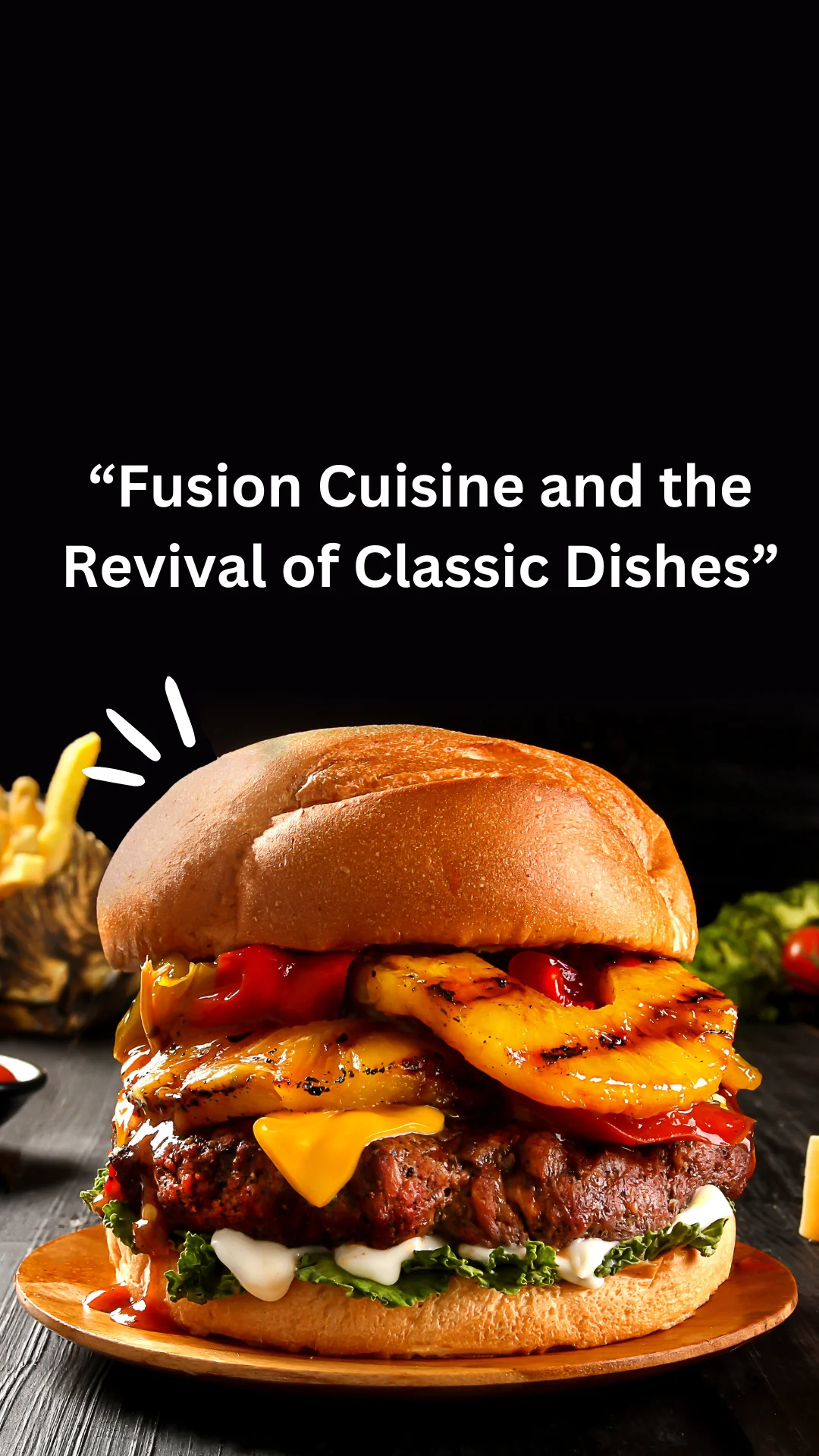Fusion cuisine, a culinary trend that blends ingredients, techniques, and flavors from diverse culinary traditions, has been transforming the way we think about food. This innovative approach not only creates exciting new dishes but also breathes new life into classic recipes. By combining elements from different cultures, fusion cuisine revives and reimagines traditional dishes, offering a fresh perspective on beloved classics. Here’s how fusion cuisine is contributing to the revival of classic dishes and what it means for the future of dining.
The Essence of Fusion Cuisine
Fusion cuisine originated as a way to merge the culinary traditions of different cultures, creating new dishes that incorporate diverse flavors and techniques. This approach challenges conventional cooking boundaries and encourages experimentation. At its core, fusion cuisine celebrates the versatility of ingredients and the creativity of chefs, allowing for the reinvention of traditional dishes in unexpected ways.
Revitalizing Classics with a Modern Twist
One of the most exciting aspects of fusion cuisine is its ability to transform classic dishes. By incorporating elements from various culinary traditions, chefs are able to revitalize traditional recipes and introduce them to a new audience. Here are a few examples of how fusion cuisine is breathing new life into classic dishes:
- Tandoori Tacos: Combining the rich, smoky flavors of Indian tandoori chicken with the fresh, vibrant ingredients of Mexican tacos results in a unique and flavorful fusion dish. The traditional Mexican taco shell is filled with marinated tandoori chicken, topped with a tangy yogurt sauce, pickled onions, and fresh cilantro. This creative blend of spices and textures offers a fresh take on both Indian and Mexican cuisines.
- Sushi Burritos: Sushi, a classic Japanese dish, is given a modern twist in the form of a burrito. By wrapping sushi ingredients like raw fish, rice, and vegetables in a large seaweed wrap, sushi burritos offer a portable and satisfying fusion meal. This innovative approach maintains the essence of traditional sushi while incorporating the convenience of a burrito.
- Kimchi Quesadillas: Kimchi, a staple in Korean cuisine, finds a new home in the Mexican quesadilla. By adding spicy, fermented kimchi to melted cheese and tortillas, this fusion dish combines the savory and tangy flavors of Korean cuisine with the comfort of a Mexican classic. The result is a delightful blend of textures and tastes.
- Pho Ramen: Combining the aromatic broth of Vietnamese pho with the noodles and toppings of Japanese ramen, this fusion dish offers a comforting and flavorful experience. The rich, spiced broth is paired with ramen noodles, sliced beef, and traditional pho garnishes like fresh herbs and bean sprouts, creating a harmonious blend of two beloved soups.
The Impact on Culinary Tradition
Fusion cuisine’s ability to rejuvenate classic dishes does more than just create new flavors—it also highlights the adaptability of culinary traditions. By experimenting with different ingredients and techniques, fusion cuisine demonstrates that traditional recipes can evolve while still honoring their roots.
For many chefs, the challenge is to maintain the integrity of classic dishes while introducing innovative elements. This balance requires a deep understanding of the original recipes and a creative approach to combining flavors. Successful fusion dishes respect traditional flavors while offering a fresh, modern perspective.
The Future of Fusion and Classic Dishes
As culinary boundaries continue to blur, the revival of classic dishes through fusion cuisine is likely to gain even more popularity. This trend reflects a broader desire for culinary exploration and a willingness to embrace new experiences. Fusion cuisine not only reinvents traditional dishes but also encourages a greater appreciation for the diverse world of food.
For home cooks and professional chefs alike, the possibilities are endless. By experimenting with fusion cuisine, you can bring new life to classic dishes and discover exciting combinations that enhance both tradition and innovation. The continued evolution of fusion cuisine promises to keep our palates engaged and our culinary experiences ever-evolving.
In conclusion, fusion cuisine’s role in reviving classic dishes illustrates its power to transform and innovate. By blending the old with the new, fusion cuisine offers a delicious way to honor culinary traditions while exploring new flavors and techniques. As we continue to embrace the creativity and versatility of fusion cuisine, we can look forward to even more exciting reinventions of classic recipes in the years to come.
